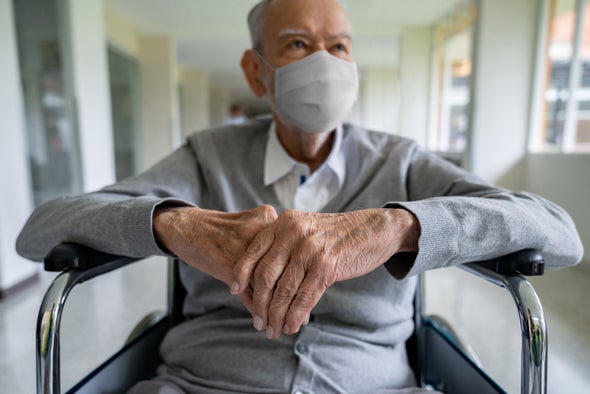It’s foolhardy to assume that only some categories of people are at risk

Credit:
Getty Images
In the face of any new and infectious disease outbreak, our first reaction and natural hope is that we will be spared from the suffering. Despite the hard logic of increasing numbers of new infections and rising forecasts of total deaths, our tendency is to deny the reality around us. So many bad things already happen in the course of our lives—cars crash, tornadoes strike and hearts fail—why add another to the list?
When AIDS emerged, people were content to think of it as a gay man’s disease, something that happened to “them” and not to “us.” While terror and anxiety gripped those in the gay community in the early 1980s, the rest of the country kept on with the status quo. Even as the HIV epidemic was fully upon us and millions were infected worldwide, the
common belief in heterosexual America was there was nothing to worry about and no need to change the lifestyles we’d grown accustomed to. Whole books were written on the
myth of heterosexual AIDS. We paid the price for such foolhardy thinking in tens of thousands of lives lost.
Today, we see this same reasoning at play with COVID-19. Many think of the disease as something that afflicts the old and infirm, with the young and healthy protected from the worst of it. We see this at play each day in packed beaches, bars and restaurants across the country and, unfortunately, in the escalating rate of new infections. For those who fear infection, it’s easy to widen the divide by blaming “them,” the young and healthy, for putting “us” at risk. But the truth, much like the truth behind the spread of HIV, is that those spreading the disease are only doing what is natural to all of us.
There is a sexual dynamic to COVID-19 that is often unmentioned—not just in terms of how sex and sexual activity can spread SARS-CoV-2, but also in terms of how human sexual behavior is driving people out of their homes and into bars. Anyone with a craving for a beer can quench their thirst in the safety of their home, but gratification comes less easily for other desires, especially when one is young, single and living alone.
The same lessons we learned in the midst of the HIV epidemic to help young people change their behaviors can also be applied to COVID-19 today: know your risk, know your partner, and take the necessary precautions.
When it comes to knowing their risk, many young people are operating under the false assumption that even if they become infected, they won’t become severely ill. Not only is this base assumption false—according to the CDC,
up to 20 percent of people aged 20–44 end up hospitalized because of the disease—but even people with asymptomatic infections are left with serious damage from the disease. A
study published in Nature Medicine showed that two thirds of those with no clinical signs of COVID-19 had “ground-glass opacity” in at least one lung. The long-term health effects of such damage are unknown, but it’s possible that an asymptomatic infection today may lead to a lethal illness later in life. The more people understand the risk—young people especially—the greater the likelihood that they will take the steps necessary to protect themselves and others.
Knowing one’s partner is a much more challenging task. With HIV, knowing your partner meant knowing their infection status and knowing and trusting the sexual history they provided. That was hard enough. With COVID-19, which spreads much more easily through casual contact, it now means knowing that everyone you spend time with in close quarters have been protecting themselves sufficiently over the previous two weeks to be undoubtedly COVID-19-free. With the high rates of infection in most communities today this is nearly impossible.
With this in mind, all of us should assume that everyone around us is infected and able to pass on the disease. And all of us should therefore make sure we are taking the necessary precautions to keep ourselves and those we love COVID-19-free: wearing masks, physically distancing, and limiting any interactions indoors.
In the absence of clear leadership and strong governance to bring us out of this crisis, our best and only hope to reduce the number of new COVID-19 infections is clear communication about the nature of the disease, the real risk of infection, and the steps that each of us can take to avoid infection and exposure. While treatment for HIV was what finally helped us contain the epidemic, communication was the strongest tool in our arsenal as we waited for that medical solution to arrive. Fortunately, the ability to communicate is one of the defining traits of our species. I have faith we will again use it wisely to wrestle another deadly pandemic under control.
 Credit:
Credit: 


Comments
Post a Comment